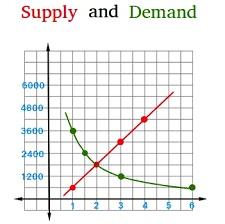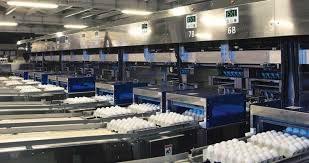The U.S. Egg Industry requires professional evaluation of available data to base decisions on flock size and placement, capital expenditure, mechanization and marketing programs. We are navigating with the aid of a rear-view mirror in a situation that demands forward-looking radar and computerized interpretation of models to correlate consumer, cost and operational inputs.
 The weekly Egg Price And Inventory Report in each edition of EGG-NEWS documents the weekly USDA-AMS combined regional large egg price. This is compared to the previous year and the three-year average. From June through early August 2021 prices conformed closely to 2020 and the three-year average. Starting in mid-August there was a clear upward trend deviating from the corresponding weekly values for 2020 and the three-year average. The increase is attributed to reopening of the economy following COVID restrictions. During the most recent week the combined regional price was about 25 cents per dozen above the three-year average but regrettably showing a downward trend. Current prices can be compared to the year-to-date peak recorded in April of this year.
The weekly Egg Price And Inventory Report in each edition of EGG-NEWS documents the weekly USDA-AMS combined regional large egg price. This is compared to the previous year and the three-year average. From June through early August 2021 prices conformed closely to 2020 and the three-year average. Starting in mid-August there was a clear upward trend deviating from the corresponding weekly values for 2020 and the three-year average. The increase is attributed to reopening of the economy following COVID restrictions. During the most recent week the combined regional price was about 25 cents per dozen above the three-year average but regrettably showing a downward trend. Current prices can be compared to the year-to-date peak recorded in April of this year.
As with all commodities, eggs respond to the basic laws of supply and demand. In 2021, the industry has demonstrated restraint with regard to flock size as evidenced by production data. For the first seven months of 2019, 8.21 billion table eggs were packed. In 2020 consumption declined by 2.5 percent to 8.00 billion with a fractional decrease for the first seven months of 2021 to 7.98 billion. Given a 1.4 percent increase in average rate of lay to 81.6 percent in 2021, it is evident that flock size has been limited. The USDA-NASS estimates that the seven-month average table egg layer flock has declined from 380 million in 2019 to 327 million in 2020 and averaged 323 million for the first seven months of the current year.
The supply side in the egg industry has undergone a profound change since the advent of COVID. Traditionally the egg industry comprises two segments, respectively marketing shell eggs and egg liquid to separate defined markets. Under unusual and extreme conditions, overlap or competition occurs between the shell egg and egg liquid segments of the egg industry. In 2015 during the epornitic of highly pathogenic avian influenza, losses attaining approximately 40 million hens disproportionately impacted the egg liquid segment. Until supplies of egg liquid could be imported and flocks replaced, eggs were diverted from retail shell egg sales to breaking. Overall supply was reduced and both shell eggs and egg liquid soared in price.
 With the advent of COVID in 2020 the reverse situation occurred. Demand for egg liquids plummeted as QSRs and restaurants closed in response to COVID control measures and unwillingness of consumers to patronize in-place dining. Eggs that would have been destined for breaking were diverted to the shell channel despite the restraint represented by the availability of egg-packing material. Prices underwent a sharp increase due to consumer fears of shortages resulting in a transitory spike to as high as $3 per dozen during April 2020. Since the apparent shortage was only a logistic restraint, market stability and hence prices were restored within weeks.
With the advent of COVID in 2020 the reverse situation occurred. Demand for egg liquids plummeted as QSRs and restaurants closed in response to COVID control measures and unwillingness of consumers to patronize in-place dining. Eggs that would have been destined for breaking were diverted to the shell channel despite the restraint represented by the availability of egg-packing material. Prices underwent a sharp increase due to consumer fears of shortages resulting in a transitory spike to as high as $3 per dozen during April 2020. Since the apparent shortage was only a logistic restraint, market stability and hence prices were restored within weeks.
Despite their hard shell, eggs demonstrate price elasticity with extreme and rapid changes in wholesale price with relatively small changes in availability. The widely used price discovery system is clearly amplifying both increases and decreases in unit revenue. The daily quotations are now used by chain buyers to effectively suppress revenue by spreading their purchases over extended periods and preempting anticipated price rises before holiday weekends and the two major annual demand surges.
Demand for shell eggs is a function of family and individual dietary habits hopefully stimulated by the activities of the American Egg Board. Essentially consumers buy eggs when they run short in their refrigerators. Reduction in price may stimulate limited incremental purchases, especially among the lower income demographic. Regrettably stores are not featuring eggs to the extent that was evident in past years. This is a direct effect of extreme competition among chains that post operating margins in the low single digits and with proportionately smaller profit margins. The Kroger Company that can be regarded as a pure-play grocer posted a twelve-month trailing operating margin of 2.0 percent and a profit margin of 1.1 percent through the end of the second quarter of the current fiscal year ending August 14th. The traditional chains have maintained high margins on eggs despite competition from the deep discounters. This has been to the disadvantage of the shell-egg segment.
The disturbances in the dynamics and interaction of the two major segments of the egg industry in 2015 due to HPAI and in 2020 following COVID represented extremes in pricing and supply. The events have generated data that could be analyzed to determine the effects of extreme pressure on availability and demand of eggs in both shell and liquid form compared to the relatively cyclic seasonal fluctuations. Despite recommendations to initiate a comprehensive economic study on supply and demand considerations, funding has not been made available to the departments of agricultural economics at major Land Grant universities. We must understand how volume of production and fluctuation in demand, albeit over a limited range, affect the production margins of the two major sectors. Clearly we need the knowledge that could be acquired from both the extreme events and regular consumption patterns to understand the relationship of volume of supply level of demand and pricing.
Traditionally the industry has operated at maximum housing capacity, manipulating flocks to anticipate periods when prices are presumed to rise and then to endure periods of negative margins. The shell industry has developed an acceptance that Easter and Christmas demand will compensate for losses during the remainder of the year. Given that the industry is transitioning from conventional cages to alternative systems, requiring a realistic total of between $10 billion to $15 billion in new capital investment, producers and their lenders will require more information on the factors that determine price and hence profitability. The decisions relating to investment in production, processing and distribution should be based on a clearer understanding of the effects of supply in relation to demand. Appropriate decisions relating to capital expenditure and flock placement will be necessary in a future operating environment presenting challenges of inflation in feed, packaging, labor, transport and other costs, demands for sustainability, disease, increased regulation and industry consolidation.